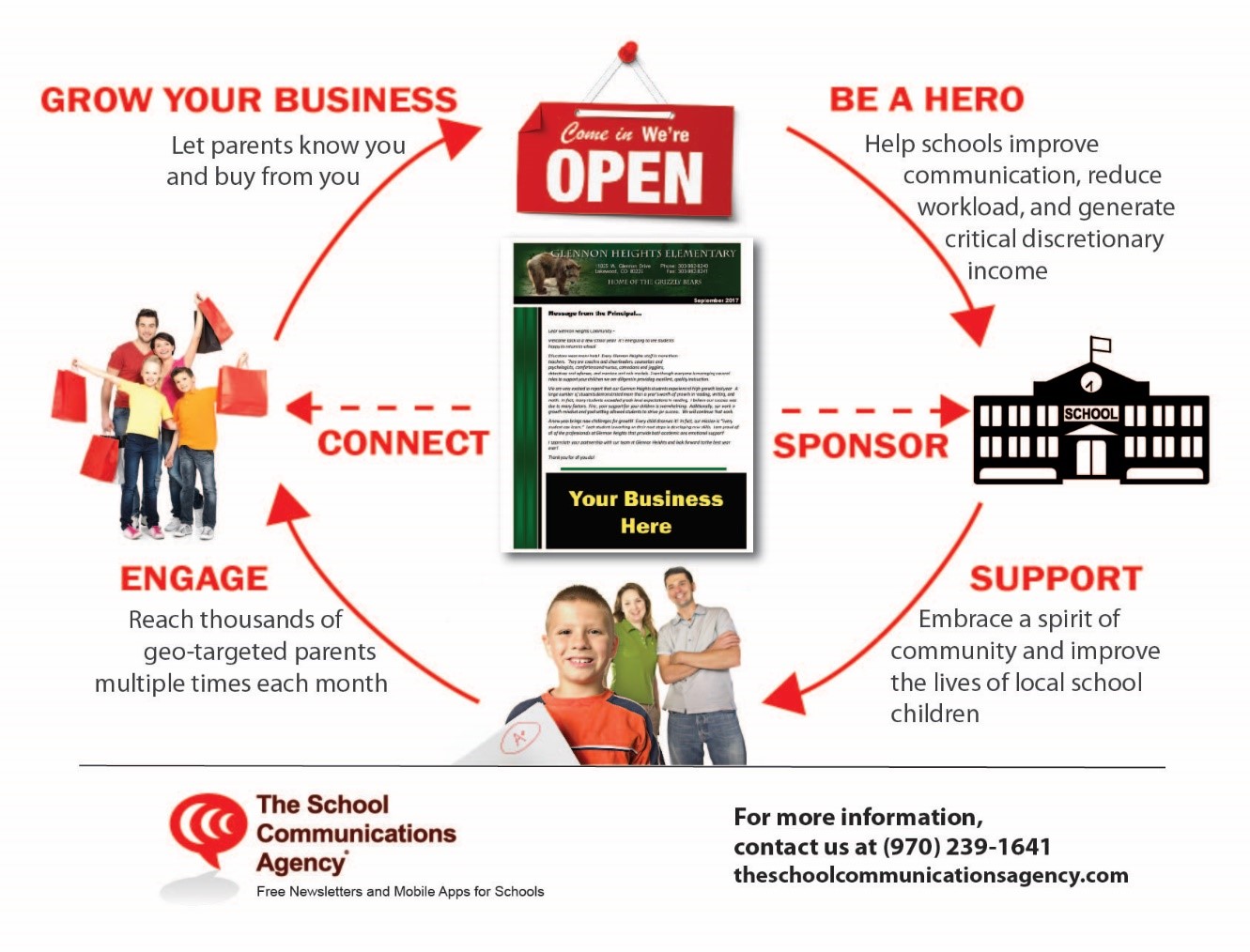
Research shows that students do better when consistent, open communication exists between schools and parents. A myriad of methods and tools are available to schools to communicate with parents such as parent-teacher conferences, websites, email, phone calls, social media, flyers, and the monthly school newsletter. The school newsletter has been around for a long, long time and remains relevant in school-to-parent communications. In fact, it has evolved into a vehicle to connect parents with local (often family-owned) businesses that sponsor schools. This connection creates mutually beneficial relationships between businesses, parents, students, and schools.
Do Parents Read School Newsletters?
Information overload is a challenge in the digital age. Marketers are constantly tracking click-through and open rates in emails. Do parents take the time to read their child’s school e-newsletter? In a recent survey of parents of schoolchildren in Colorado conducted by The School Newsletter Agency (TSCA),
many parents responded that they refer back to the monthly newsletter three or more times per month and approximately 50% of parents read the newsletter at least two times per month. Clearly, parents are reading school newsletters and often refer to them throughout the month for relevant information.
Additionally, schools are concerned with information accessibility issues. A well-designed e-newsletter
addresses this concern and are formatted for mobile devices, tablets and desktop viewing, while also designed to easily convert to PDF, so schools that still require paper copies to reach parents, can easily print them.
Do School Newsletters Improve Parent Engagement with Schools?
Parents are busy. Well-designed school newsletters have reoccurring, organized content areas so that parents can quickly find what is of interest to them each month. Well-ordered school information, such as sports schedules, special events and testing deadlines, promotes parent engagement. Content matters and schools know it. The right content is key. Reading the school newsletter becomes a habit if done right. Additionally, sticking to a consistent day to send the newsletter to parents each month promotes parent readership.
A group of principals who serve as part of a Education World’s principal focus team, agree that newsletters are a key element in any communications plan. Newsletters offer consistent messages with consolidated and summarized information about upcoming activities, student achievements, menus, fundraiser programs, and photos from school events. Consistent communication from schools in the form of a monthly newsletter is expected and looked forward to each month by parents.
According to Frank Hagen, who has been an educator for more than 30 years, parent engagement is a key component in educating children in the 21st Century. Parent engagement increases as a result of consistent monthly newsletters, leading to improved student success.
Do Parents Support Businesses Because of Advertising They See in School Newsletters?
One challenge that businesses face is how to reach busy parents in the community. Advertising in school newsletters allows businesses to reach this niche market of parents, school staff, teachers and students. Links embedded within school newsletters allow parents to access additional information from the school, district, businesses/sponsors and other community stakeholders. According to TSCA’s recent survey, nearly 60% of parents who responded click on the advertisements in their school newsletters. This click rate is well above the industry average reported by Constant Contact.
In the same survey, parents were asked if they visited or did business with sponsors after seeing the business advertised in their school newsletter. Approximately 50% of respondents say they have visited or done business with 1 to more than 4 businesses after seeing advertising in their school newsletter. Local businesses grow and benefit from sponsoring schools in this way.
How do Businesses Support Schools?
It is no secret that schools are in need of funding sources for anything from extracurricular activities to school supplies. Schools and parent organizations spend countless hours setting up fundraising events and activities and setting up family dinners at local restaurants that give a small percentage of sales back to schools. School newsletters can be another fundraising vehicle. A portion of the advertising investment from local sponsors goes to support schools. Schools have reported using the funds to pay costs for students who could not afford field trips, prom, and schools supplies. Other schools have used the funds from school newsletter sponsor support for playground equipment, teacher appreciation, and scholarships.
School newsletter sponsorship also supports the design process and reduces the workload on school staff saving staff hours of time better used to directly support students and teachers. Businesses that advertise in school newsletters are building relationships with community parents, while supporting their local schools, and promoting their businesses. And, many of these businesses are owned by parents who want to support their child’s school, while growing awareness for their businesses.
Is the School Newsletter Still Relevant?
Parents, businesses, teachers, and school administrators say it is. In addition to its traditional role to inform parents about school activities, deadlines, and announcements, it has become a path to parents for businesses. The school newsletter reaches parents on a regular, monthly schedule at an extremely affordable price for local businesses. These businesses are supported by parents and in turn they support their children’s schools, thus connecting communities and growing their businesses, which results in parent engagement and increased student success. While there are multiple tools and methods to communicate with parents, the school newsletter remains relevant and has evolved into a beneficial tool to connect and support the community.
